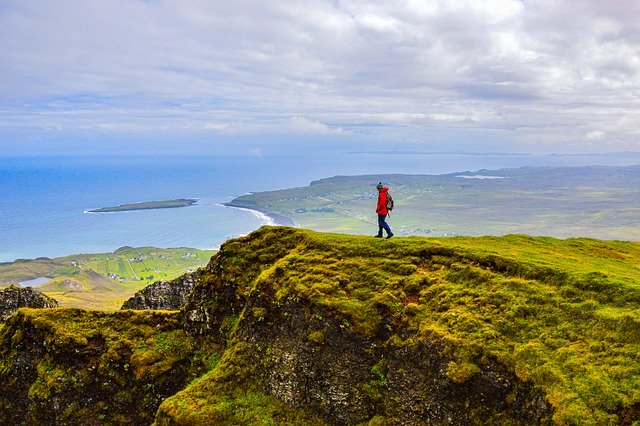The sense of grief and loss can be overwhelming in these challenging times of the Coronavirus pandemic. Maybe we have lost a relative, friend or colleague to the virus or we are experiencing the loss of the way things used to be – the levity and gaiety of daily interactions, the structure and social intercourse of a common workplace, the freedom of movement and access, the enjoyment of our favourite sport or pastime or the security, success and predictability of our business. It is easy to beat up on ourselves and say, “I should be over this by now” or “Why aren’t I more positive like other people?” Grief and loss have their own individual expression and it takes time and space to deal with the intensity of these difficult emotions.
Meditation as a refuge
Whatever is the cause of our sense of grief and loss, meditation can serve as a refuge – a place of safety, security and equanimity in the midst of everything that is unsettling. It enables us to accept what is and move forward, even with tentative ideas and steps. Meditation provides a grounding when the sense of loss is swirling around us, encompassing our thoughts and emotions.
We can become grounded through our breath – noticing the in-breath and out-breath and the rise and fall of our abdomen or chest. We can rest in the space between our in-breath and out-breath and envisage kindness and strength flowing into us while tension and unease flows out of us.
We can sense the solid feeling of the floor or ground whether we are sitting, lying, standing or walking during our meditation. As we do a body scan, we can notice our bodily sensations and points of tension – caused by suppressing the sense of grief and loss and holding back the natural flow of difficult emotions. We can breathe into these places of tautness and pain and allow our emotions to surface and release.
We can feel the flow of energy, warmth and strength move through us as we sense the tingling in our hands and feet or through our fingers touching each other. We can sense surrounding sounds by tuning into the room tone or the sounds surrounding us in the open – the breeze blowing, leaves in the trees rustling or the birds chirping or singing. We can become immersed in the energetic field of our surround-sound as we allow ourselves to experience focused attention.
Meditation for grief and loss
We can use general forms of emotion meditation or a structured approach such as the R.A.I.N. process (recognise, allow, investigate, nurture). Alternatively, we can use a specific meditation focused on grief and loss. For example, Diana Winston, author of The Little Book of Being, offers a guided meditation podcast on Working with Grief and Loss.
Her approach begins with grounding processes such as those described above but then moves onto dealing directly with the emotions of grief and loss. She suggests at the outset of her focus on grief and loss (22min. mark), that you envisage a time when you were held tightly and securely and encompassed in love and compassion – whether by a parent, intimate partner or a close friend. Diana encourages you to dwell in this feeling of being surrounded by support and strength, a feeling that can be reinforced by feeling the solidity of the floor or ground beneath your feet or body.
Diana encourages you to notice your feelings of sadness whether it is for yourself, others close to you or people in your neighbourhood or interstate (as with the rising number of deaths from Coronavirus in the State of Victoria, Australia). She suggests that you allow the emotions and bodily sensations to manifest themselves – whether feelings of anxiety, constriction or heaviness of mind and heart. She stresses the importance of staying grounded throughout by simultaneously being connected to something solid – a memory of being held warmly or the solidity of the earth beneath your feet.
While experiencing these emotions, especially if you are feeling regret at failing to appreciate what you had or connecting with a loved one, it is vital to show yourself kindness and self-compassion and to reassure yourself with words like, “I can get through this”, and “I have the support of others wherever in the world they might be”. You can extend your compassion to others who are experiencing their own form of loss and grief, especially those in Beirut at the moment. Tara reminds us to accept what is and to acknowledge that “we are all in this together”.
Reflection
It is natural to feel grief and loss in challenging times like those we are all experiencing differentially at the moment wherever we are in the world. Denying those feelings can intensify them and lead to harmful and unproductive behaviour and negatively impact our interactions. Meditation provides a refuge and a way to face our difficult emotions with kindness and self-compassion.
As we grow in mindfulness through meditation and reflection, we can find the resilience and strength to persist in the face of adversity and restore our equanimity no matter what the circumstances that challenge our ability to cope.
________________________________________
Image by Nikolaus Bader from Pixabay
By Ron Passfield – Copyright (Creative Commons license, Attribution, Non-Commercial–No Derivatives)
Disclosure: If you purchase a product through this site, I may earn a commission which will help to pay for the site, the associated Meetup group and the resources to support the blog.



